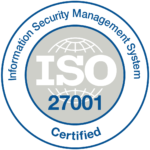Table of Contents
Congratulations on choosing Futr’s AI (Artificial Intelligence) backed chatbot and live chat solution for your organisation!
A well-crafted welcome message is crucial for engaging users and directing them to the answers they seek quickly.
Here are some best practice tips for creating impactful chatbot welcome messages, along with 10 examples that cover a range of styles, from professional to action-driven to casual and friendly.
Best Practice Tips: #
- Be concise:
- Keep your welcome message short and to the point. Users should grasp the purpose of the chatbot and its capabilities within a few seconds.
- Use a friendly tone:
- Make your chatbot approachable and relatable by adopting a conversational tone. This helps create a positive user experience.
- Personalize the message:
- Whenever possible, incorporate the user’s name or any other relevant information you have. Personalization adds a personal touch and increases engagement.
- Provide clear instructions:
- Clearly explain how users can interact with the chatbot and what types of queries it can handle. This reduces confusion and improves user experience.
- Use actionable language:
- Encourage users to take specific actions, such as asking a question or providing details. Clear instructions prompt users to engage with the chatbot actively.
- Use humour cautiously:
- While humour can be engaging, use it sparingly and consider the context. Make sure it aligns with your brand image and the user’s expectations.
- Offer assistance:
- Assure users that you are there to help them. Let them know that they can rely on the chatbot for quick and accurate answers.
- Set expectations:
- Be transparent about the chatbot’s limitations. If there are certain queries it cannot handle, inform users in advance to avoid frustration.
- Provide alternative contact options:
- In case the chatbot cannot assist with a specific request, offer alternative ways for users to reach out to your support team or find more information.
- Continuously optimize:
- Regularly analyze user interactions and feedback to refine and improve your chatbot’s welcome message. Adapt to user needs and changing trends.
Examples #
Professional: #
- “Welcome to our chatbot!
How may I assist you today?
Just type your question, and I’ll provide the answers you need.”
Action Driven: #
- “Hi there!
Ready to get the information you’re looking for?
Ask me anything, and I’ll help you find it ASAP!”
Casual and friendly: #
- “Hey!
Great to see you here.
I’m your trusty chatbot, ready to find answers for you. Just fire away with your questions!”
Personalized: #
- “Welcome, [User’s Name]!
How can I assist you today? Let me know what you’re looking for, and I’ll make sure you get the right answers.”
Humorous: #
- “Welcome, welcome!
I’m your friendly neighbourhood chatbot. Think of me as your personal genie, ready to grant your information wishes!”
Instructional: #
- “Hello!
You’re chatting with our AI-powered chatbot.
To get started, simply type your question, and I’ll do my best to provide a helpful response.”
Assisting: #
- “Hi there!
I’m here to assist you.
If you have any questions or need guidance, feel free to ask. I’m just a message away!”
Expectation-setting: #
- “Glad you’re here!
Our chatbot is an excellent resource for quick queries.
For more complex issues, our support team is available to help.
How can I assist you today?”
Continuous improvement: #
- “Welcome to our chatbot!
We’re constantly learning and improving. Your feedback is valuable to us.”

